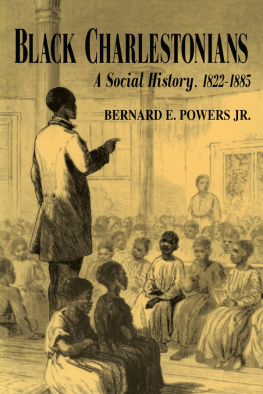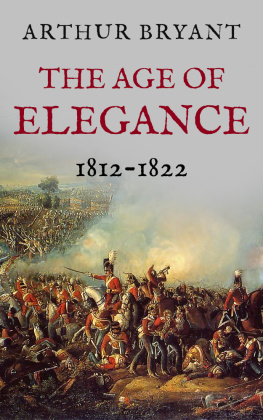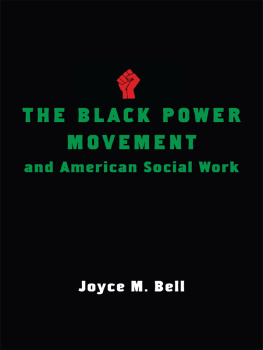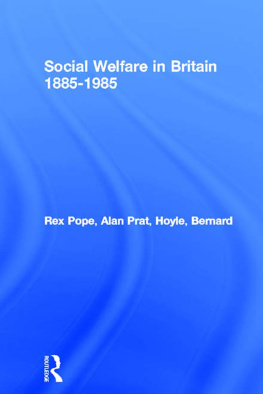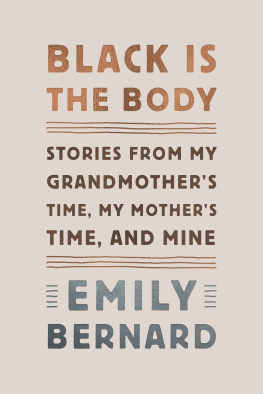Bernard E. Powers - Black Charlestonians: A Social History 1822-1885
Here you can read online Bernard E. Powers - Black Charlestonians: A Social History 1822-1885 full text of the book (entire story) in english for free. Download pdf and epub, get meaning, cover and reviews about this ebook. year: 1994, publisher: University of Arkansas Press, genre: History. Description of the work, (preface) as well as reviews are available. Best literature library LitArk.com created for fans of good reading and offers a wide selection of genres:
Romance novel
Science fiction
Adventure
Detective
Science
History
Home and family
Prose
Art
Politics
Computer
Non-fiction
Religion
Business
Children
Humor
Choose a favorite category and find really read worthwhile books. Enjoy immersion in the world of imagination, feel the emotions of the characters or learn something new for yourself, make an fascinating discovery.
- Book:Black Charlestonians: A Social History 1822-1885
- Author:
- Publisher:University of Arkansas Press
- Genre:
- Year:1994
- Rating:5 / 5
- Favourites:Add to favourites
- Your mark:
- 100
- 1
- 2
- 3
- 4
- 5
Black Charlestonians: A Social History 1822-1885: summary, description and annotation
We offer to read an annotation, description, summary or preface (depends on what the author of the book "Black Charlestonians: A Social History 1822-1885" wrote himself). If you haven't found the necessary information about the book — write in the comments, we will try to find it.
Black Charlestonians: A Social History 1822-1885 — read online for free the complete book (whole text) full work
Below is the text of the book, divided by pages. System saving the place of the last page read, allows you to conveniently read the book "Black Charlestonians: A Social History 1822-1885" online for free, without having to search again every time where you left off. Put a bookmark, and you can go to the page where you finished reading at any time.
Font size:
Interval:
Bookmark:

Copyright 1994 by Bernard E. Powers Jr.
All rights reserved
Manufactured in the United States of America
08 07 06 05 04 5 4 3 2
Designed by Gail Carter
The paper used in this publication meets the minimum requirements of the American National Standard for Permanence of Paper for Printed Library Materials Z39.481984. 
Library of Congress Cataloging-in-Publication Data
Powers, Bernard Edward.
Black Charlestonians : a social history, 18221885 / Bernard E. Powers, Jr.
p. cm.
Includes bibliographical references and index.
ISBN 1-55728-364-8 (cloth)
ISBN 1-55728-583-7 (paper)
1. Afro-AmericansSouth CarolinaCharlestonHistory19th century. 2. Charleston (S.C.)History. I. Title.
F279.C49N4 1994
975.791500496073dc20
94-7861
CIP
ISBN-13: 978-1-61075-070-7 (electronic)
This book is dedicated to
Bernard Sr., Mildred, Brian, Brenda, and Lorraine,
whose love and devotion made it possible.
In the course of researching and writing, I have amassed a considerable debt to many individuals and groups. At Northwestern University, Professor Sterling Stuckey initially urged me to study black life in Charleston, and his brilliant insights then and now have heightened my appreciation for the rich culture of the African-derived population there. Professor George Fredrickson supervised my investigations as they took the form of a doctoral dissertation and provided keen insights into the nature of southern race relations. In more recent years, scholars such as Norrece Jones, Daniel Littlefield, James Anderson, William Hine, and Gregory Mixon have offered useful criticism of conference papers that embodied various aspects of this study. Willard Gatewood, a consummate scholar, also read a version of this study and took the time to provide much needed encouragement and support at critical junctures. I owe a special debt to Edmund Drago, who set aside a frenetic schedule to read the manuscript and share insights based on his research on this important community.
Without the support of various libraries and archival personnel, this study would not have been possible. The assistance of Donald West, Rebecca Graebner, and Curtis Franks of the Avery Research Center for African American History and Culture at the College of Charleston has been indispensable. At the Special Collections Division of the College of Charleston Library, Oliver Smalls professionalism has been unexcelled and Bill Finleys assistance unusually generous. At the University of South Carolina Caroliniana Library, Allan Stokes and Eleanor Richardsons familiarity with the manuscript and photographic sources of South Carolina history is exceptional. I would also like to thank Michelle Baker of the South Carolina State Museum, Donna Wells ofthe Moorland-Spingarn Collection of Howard University, and Rita Reynolds for expeditious assistance locating photographs. Many thanks also go to the staffs of the Library of Congress, the South Carolina Historical Society, the Charleston Library Society, and the Charleston County Library.
The generosity of others has also been valuable. Cheryle Drago and Alisandra Ravenel contributed suggestions or materials that proved vital contributions to my efforts. Reverend Alphonso R. Blake and Deacon Alfonso Evans, Bishop Zedekiah L. Grady and the late Reverend Marion Stroble extended the hand of fellowship and provided useful records pertaining to the black church.
Technical support was provided by Mrs. Joanne Diaz, whose mastery of computerized word-processing skills solved even the most challenging problems with ease. The maps were produced by Mr. Cornell Mack. The easygoing style, the sharp eye, and literary talents of my editor, Scot Danforth, improved the final manuscript immensely. The patience and diligent efforts of Karen Johnson of the editorial staff were also invaluable. Certain portions of this book originally appeared in the January 1994 issue of the South Carolina Historical Magazine as an article entitled Community Evolution and Race Relations in Reconstruction Charleston, S.C. I am grateful to Stephen Hoffius, editor of the Magazine, and the South Carolina Historical Association for permission to reprint them here. A faculty research grant and a summer research stipend from the College of Charleston helped defray some of the costs of publication.
Finally, special thanks go to my wife, Lorraine, who has endured my long hours and the vacation-research jaunts, but who has willingly made the sacrifices necessary to see this work come to fruition.
BERNARD E. POWERS JR.
Charleston, S.C.
Although Afro-Americans have always been a significant presence in this countrys major cities, for the greater part of the nations history they were typically found in the countryside. In fact at the end of the Civil War, 90 percent of the black population resided in the rural South. Yet, a dramatic redistribution of that population has occurred over the last century, producing a complete reversal of the traditional residential pattern. In 1980 approximately 80 percent of all American blacks were urbanized.
This traditional focus has been invaluable and contributed much to the body of literature on black urbanization. In the last decade or so, scholars have realized that the crucial issues faced by black urbanites in twentieth-century northern cities were not necessarily identical to those they faced in other regions and during earlier phases of urbanization and industrialization. While twentieth-century northern black communities continued to draw the greatest interest, a number of path-breaking studies
The comparatively small, mainly commercial cities of the South always contained substantial black populations and comparatively few immigrants. Given these characteristics, along with the Souths racial ideology and the heritage of slavery, we might expect the cities that developed in the region to have produced experiences that were somewhat different from their northern counterparts. Only after sufficient studies of Old South and New South cities have been done in the nineteenth and twentieth centuries will we fully begin to grasp the totality of the southern black urban experience or the general urban experience. No comprehensive view of black urban life in the South would be complete without giving proper consideration to the pivotal city of Charleston, South Carolina. This study, in part the result of the comparatively recent interest in nineteenth-century southern cities, is designed to explore the major social and economic features of the black community there.
In the early nineteenth-century South, Charleston was second only to Baltimore in population and in commercial prominence. But by the end of the antebellum period, the city had declined in relative importance as its commercial preeminence fell victim to the southwestward spread of the cotton kingdom and the rivalry of the emerging southern river towns that profited from the steamboat trade. Despite its declining economic fortunes, Charleston maintained an atmosphere of gentility because its location in the heart of the South Carolina Low Country made it the resort of the regions most affluent planters. Many of them maintained homes in the city to which they came every summer, as they fled the malarial miasmas that they supposed emanated from the swamps surrounding their plantations. In Charleston the planters surrounded themselves with the pleasures of elegant restaurants, the theater, and the race track, or enjoyed the breezes that aerated their palatial mansions in the lower part of the city.
Font size:
Interval:
Bookmark:
Similar books «Black Charlestonians: A Social History 1822-1885»
Look at similar books to Black Charlestonians: A Social History 1822-1885. We have selected literature similar in name and meaning in the hope of providing readers with more options to find new, interesting, not yet read works.
Discussion, reviews of the book Black Charlestonians: A Social History 1822-1885 and just readers' own opinions. Leave your comments, write what you think about the work, its meaning or the main characters. Specify what exactly you liked and what you didn't like, and why you think so.

